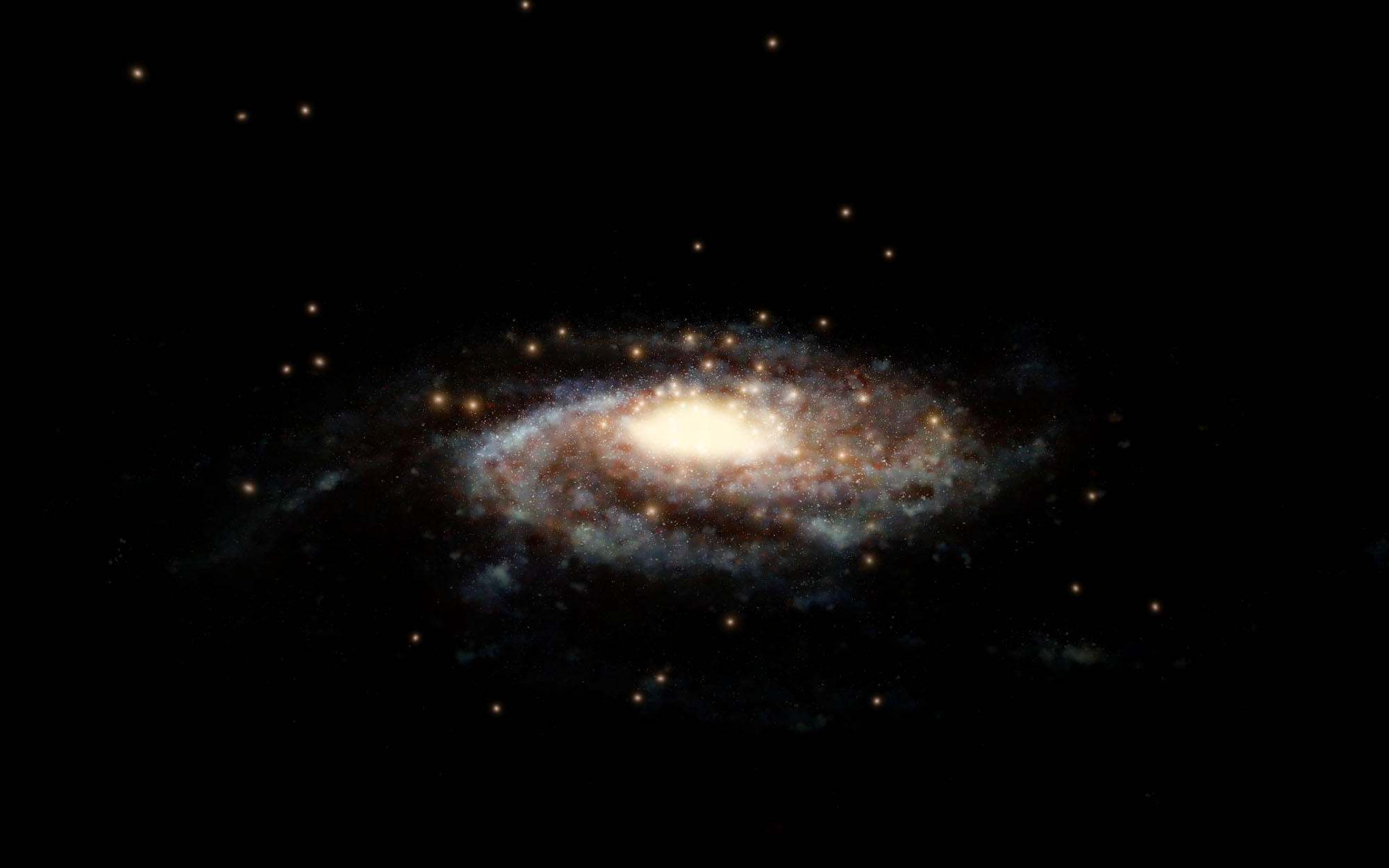How heavy is the Milky Way?
How much does our home galaxy, the Milky Way, weigh? It’s not a very easy task to determine the true dimensions of an object when you live inside that object. Imagine trying to measure the size of your house while sitting at the kitchen table. On top of that, a large part of its mass is not even visible, because it’s dark matter. Scientists estimate there are about 100 to 300 billion stars in the Milky Way. That gives a visible mass of approximately 900 billion Suns at a diameter of 170,000 to 200,000 light-years. But the visible mass is not enough to explain the observed rotation of stars in our galaxy.
Scientists can also use this observed rotation, however, to calculate an estimate for our galaxy’s mass too. How quickly the objects of the Milky Way move depends on the gravity that is acting on them – that is, the mass of the Milky Way. And the farther away an object is, the more it feels the pull from the Milky Way as a whole.
Thus, astronomers have looked for celestial objects that orbit the Milky Way at great distances – globular star clusters. The ESA satellite Gaia supplied data for 34 of these objects, which were up to 65,000 light-years away. The Hubble Space Telescope contributed data from twelve more globular star clusters at distances up to 130,000 light-years away. The result of the combined measurements gives a mass of 1.54 trillion solar masses for the Milky Way’s mass, while previous calculations gave estimates between 900 billion and greater than two trillion solar masses.
The result is interesting not just for purely statistical reasons – knowing the total mass also helps in determining how dark matter is distributed and in research into the history of our galaxy. Last but not least, the mass of the Milky Way will also determine our future – for example, how the assimilation of the Magellanic Clouds and later also the merger with Andromeda will proceed. Our neighbor, which is still currently 2.5 billion light-years away, is composed of approximately 1 trillion stars, so it has about three times more stars than the Milky Way. Maybe we shouldn’t be calling it a merger, but instead a takeover.

